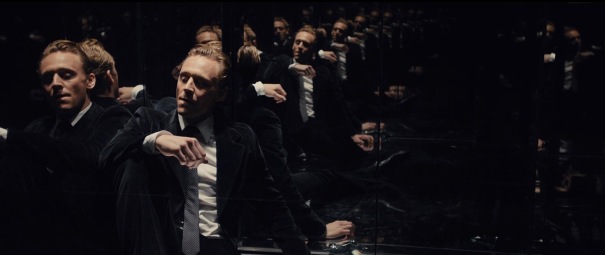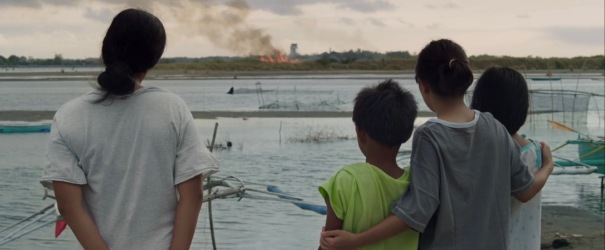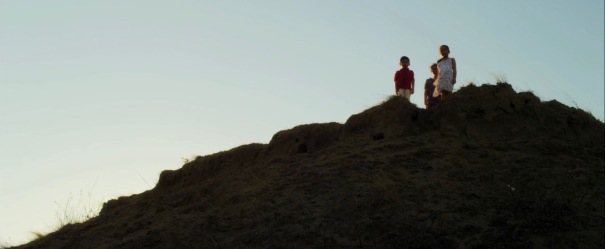
There is a clear and distinct privilege for people in metropolitan areas to be able to experience a wide variety of film offerings that you’d never get in a suburb or rural neighborhood. Take it from me, I lived most of my life in suburban New Jersey and even though it was more developed than most places, the nearest indie theater was 45 minutes away in Montgomery. In comparison, I can walk to the American Film Institute’s Silver Theater in D.C. area from my apartment. I can take a short 15 minute train ride to E Street Cinema to watch a Turkish documentary called Kedi on a lazy Sunday.
The New African Film Festival screening at AFI Silver in March is one of the best opportunities for global exposure to cinema that will never release in a theater near you for a weekly screening. Even those of you sneaky pirates who think they can find an online version of these will be most likely be sorely mistaken. Torrents are created for hits, and hits will come from movies that people already know about. African cinema is easily the most neglected cinema on the planet. It doesn’t make money, it doesn’t gain exposure, and in many cases, it never even escapes the mind of a creator, who is too often lacking in resources to make his vision, and even if he has resources, is discouraged more often than not by government censorships and bylaws meant to repress artistic expression for a variety of heinous political reasons.
Yet, for some reason, African cinema is rumbling. There are signs, noises, and whispers of a cinema that is ready to burst. In my continued discovery of cinema history’s offerings, I have only ever encountered 2 African mainstays in the global cinema discussion; the Senegalese masters Ousmane Sembené (Black Girl) and Djibril Diop Mambéty (Touki Bouki). Egyptian filmmaker Youssef Chahine (Cairo Station) and Algeria’s Mohammed Lakdar-Hamina (Chronicles of the Years of Fire) are being rediscovered just now.
In recent years however, we’re seeing a variety of filmmakers from the forgotten continent emerge in major projects. Abderammane Sissako’s Timbuktu was nominated for the Best Foreign Film Oscar in 2015, the first ever film from Mali nominated. Chadian filmmaker Mahamat Saleh-Haroun is a Cannes regular spotlight artist. North Africans such as Mohammed Beni Attia (Tunisia), Mohammed Diab (Egypt) are being reinvigorated post-Arab Spring as filmmakers with strong social messages.
So it seems the New African Film Festival in D.C. is but a culmination of the years of struggle of these filmmakers and countries to break through. Cannes, Berlin, and Venice are nice steps, but even they are inaccessible to most of the regular public. To have a screening in a town like Silver Spring, Maryland a very unsuspecting place, it can be seen as a first step of the American public getting a taste of what African cinema has to offer.
But how exactly how far has it come?
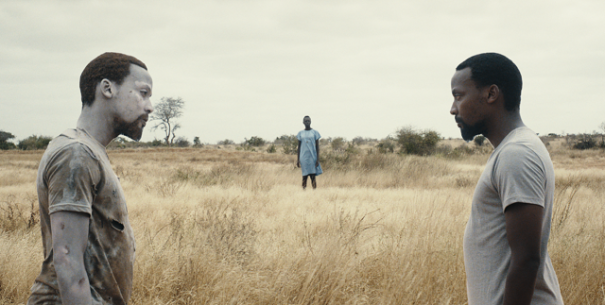
A sure sign of the massive technical and thematical progress of African cinema has come over the past decade, Kati Kati plays like a (good) Shyamalan thriller by way of Terrence Malick. Centering around a young woman named Kaleche who ends up in a mysterious village only to find out that it is a pergatory for the dead, the film unravels in layers, with clues beginning to connect and form a story behind each individuals journey to this purgatory, siphoned through Kaleche’s interactions with them. The movie’s narrative ties the audience’s anticipation with Kaleche’s (we and her are both as ignorant of the “rules” of this place) and Masya isn’t afraid of adding non-narrative flourishes, and experimenting with sound and cinematography, a style which more than reminded me of Malick’s The Tree of Life and David Gordon Green’s George Washington.
The movie’s ultimate reveals may seem conventional to those well versed in Hollywood and Bollywood thriller stock, which is clearly what Masya is playing off of here, but for a debut filmmaker from a nation just recently having dipped its toes into the narrative filmmaking world (Kenya has more of a history of documentary filmmaking), Kati Kati more than works. It deftly blends in a variety of genre spices, including a romance, science fiction, fantasy, horror, sports, and historical allegory to Kenya’s political struggle into a bubbling stew which can be seen as a sort of resume for the nation’s film industry as a whole… the ideas and technical resources which are now ready to flourish and an industry of future filmmakers which can contribute to the growing production of African cinema, usually lost in global film discussion.
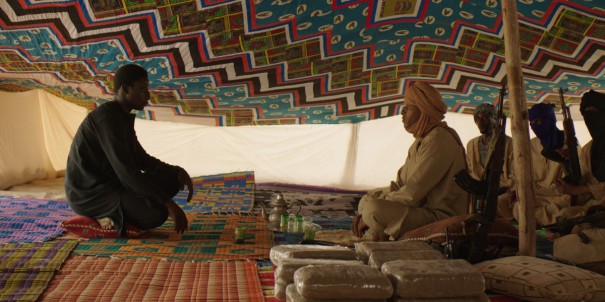
The second film I screened, Wúlu, was a much more accomplished work. Still it was from only a sophomore filmmaker, Daouda Coulibaly, but resolute in its vision of covering the cocaine trade in West Africa and the intricacies of its web, which entangles the main character, a young upstart named Ladji. The movie sets its premise with a familiar storyline of a young man who, in desperate need to get out of his current glut as a poor taxi servicer, decides to give himself to the service of cocaine dealers in Mali. Very much in Goodfellas fashion, Ladji climbs the ladder and gets the riches, but his life of crime continuously leaves him looking over his shoulder. His sister, who whores herself out for money, becomes enamored with his success and bathes herself in the new lavish lifestyle, which is volatile and unlikely to last. Added to the problems is Ladji’s budding romance with the daughter of an influential and intimidating state diplomat.
Coulibaly’s ability to shock us in even predictable situations is the gift of a talented filmmaker. His shaky-cam technique is not a gimmick but a deliberate style to mimic the volatile atmosphere the film’s characters constantly find themselves in. It focuses on the surrounding details rather than the people themselves. When Ladji and his two henchmen enter their bosses layer, there is no one there, and the camera suddenly starts wandering around just as Ladji’s eyes would, checking out the walls, the floors to find clues. Then, it focuses on blood smears by Ladji’s feet. The boss is dead. Throughout the film Coulibaly employs this technique and only during scenes within closed doors does the camera enter static mode; when we are officially barricaded from the hostility of Ladji’s work.
The turbulent existence of oppressed populations and the survival techniques of a hostile environment accurately reflect the realities of life of Africa’s unstable nations, ever-changing through the rise and usurpation of military rulers. One such ruler was Hissein Habré, dictator of the nation of Chad, and subject of Mahamat Saleh-Haroun’s latest documentary, Hissein Habré: un trágedie tchadienne. An expose on the mass murder, arrest and torture of citizens during Habré’s ruthless rule, the film focuses on subjects who tell their stories through some graphic body injuries, stuttering voices, and dejected outlook on the future. But the aim of Haroun was not only to give these people a voice, but have it be formed into action and ultimately justice. It’s a valiant documentary that, while you’re watching it, is a reminder of incredible neglect that the rest of the world has on some of the most vulnerable populations.

Several instances throughout the film remind us of how Western politics uses war-gaming which results in, through a chain reaction, the murder of thousands. Yes, the rise of Hissein Habré is no small “coincidence” but a direct result of American and French funding. Yet, the powerful countries of the world are laser focused on only areas which serve their own self-interest, despite the fact that they declare themselves purveyors of “justice”. Justice for who? In filmmaker Haroun’s hands, the justice comes from within the community. The trial and sentence of Habré gave Chad a new era and a joyous renewal of faith for the hundreds of the thousands of lives he attempted to destroy. Likewise, our own faith may get restored, for the power of cinema and its spreading of knowledge, information and harsh truths can lead to action and ultimately, victory.
Not all stories end on such a positive note however, and we must always remember, that as first-worlders in countries where basic necessities and daily freedoms allow us a wealth of information also feed into an arrogance about the rest of the world. We feel that because of our elevated economic or social position on the global scale, that we have the power and ability to know other people’s situations and thus, patronizingly dictate to them how to solve it. Such a misnomer on that part of the privileged is brilliantly destroyed and buried by Mohammed Diab’s firecracker thriller Clash. Taking place entirely within the confines of a police van, the movie traverses the dangerous neighborhoods of Cairo following the Arab Spring and the rise of power of the Muslim Brotherhood. Within the van are individuals from all sides of Egypt’s complex socio-political uprising… Journalists, police officers, supporters of the former Mubarak regime and Muslim Brotherhood members. There are the young and the old, the radical and the centrist, the religious and the indifferent.
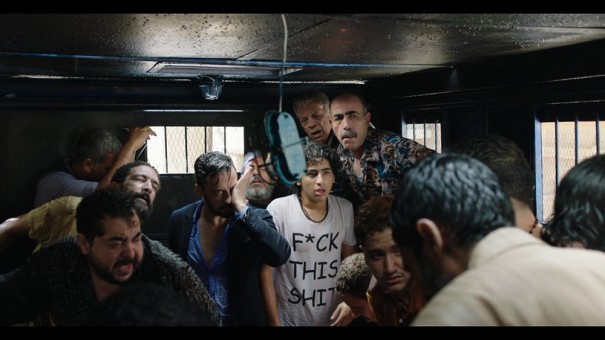
The conversations that Diab strikes between his characters are wild enough to make our heads spin, the confusion of who is on who’s side is unclear enough to frustrate our ignorant and uneducated Western minds. I could tell, from the first 10 minutes of the movie, until its conclusion, that Diab’s film works both as a stark social commentary for an Egyptian filmgoer and a mocking satire of America and Europe’s feeble attempts to try to “pinpoint” the good and the bad of the Arab Spring. The film systematically obliterates our binary point of view when discussing tensions in the Middle East. Diab purposefully populates the back of the police van bit by bit with different groups, initially daring us to pick the good guys. Like the Western-educated rube I am, I fell for it. When the first group of journalists were stashed alongside Mubarak supporting youths, I took the journalists side because they had “Associated Press” tags. I villainized the youthful protestors. When the Muslim Brotherhood members came aboard I villainized them, and suddenly the Mubarak supporters started to elevate in likeability. This continued throughout the film whereby naturally, our minds try to organize people into groups, and organize morality into “levels” on a scale.
The lessons learned in films like these make it all the more important that they are presented at such events as the New African Film Festival. These films represent a cinema of a world, a continent, a people we probably do not think of very often. They are not in the microscopic focus of our government and news organizations, their events are not held as important even though they may be as directly affected by our nation’s actions as are events in the Middle East or Europe or Asia. African cinema is a cinema which has for so long been the kid in the back of the classroom, in the corner, the one everyone forgets has a voice and something to say. But we are starting to hear its voice, and it is growing ever louder and its words ever more important.

